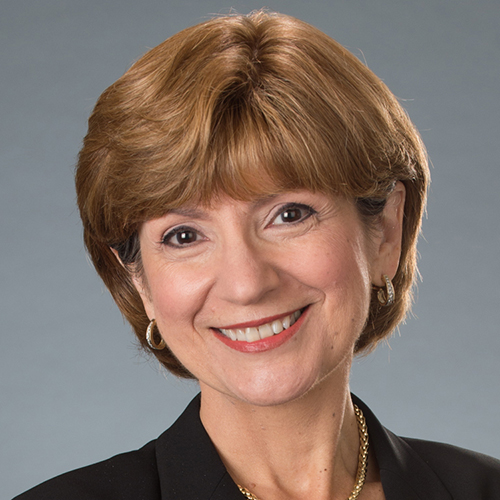Statement of Jocelyn Frye, President of the National Partnership for Women & Families WASHINGTON, D.C. – June 28, 2024 – Today, the Supreme Court upended sound, longstanding, legal precedent that has provided protections for everyday people for decades...

Voters Say It’s Time for Paid Family and Medical Leave
23 years.
During that time, you can raise and put a child through college.
Transform HIV/AIDS from a death sentence to a chronic disease.
Move the country from “don’t ask, don’t tell” to marriage equality for all.
Grow Google and Netflix into the companies they are today (well, that took even less time — Netflix launched 19 years ago, in 1997, and Google in 1998).
But what our country hasn’t managed to do in the last 23 years is to update its national family and medical leave policy to reflect the financial realities facing millions of women and men and the families that rely on them. That’s a terrible shame, and a failure that creates a huge drain on businesses, families, communities, our economy and our country.
Today is the 23rd anniversary of the Family and Medical Leave Act (FMLA). The organization I lead, the National Partnership for Women & Families, drafted the groundbreaking law and led the long fight to pass it. President Bill Clinton made it the first piece of legislation he signed. The FMLA provides unpaid, job-protected leave to about 60 percent of this country’s workers. In 23 years, it has been used more than 200 million times by people who needed leave to address serious personal or family medical conditions. It’s been a lifeline for millions.
It has also changed the culture of our workplaces and our country, making clear that people aren’t automatons when they show up for work. They have lives and families, and recognizing that through supportive policies promotes loyalty, productivity and success in the workplace. The FMLA started conversations that needed to be held.
23 years later, it’s fair to say the country knows what needs to come next. The FMLA provides only unpaid leave, which millions of workers simply cannot afford to take. That’s why one in four new mothers is back at work within just two weeks of giving birth. It’s why so many families go on public assistance or face bankruptcy when they need time away from work to recover from serious illness or care for a new baby or a seriously ill child, spouse, parent or other close relative. It’s why so many families are forced to raid their retirement funds and savings — mortgage their homes and futures — when a relative needs elder care.
Today in the United States, just 13 percent of workers have paid family leave through their employers. Less than 40 percent have paid medical leave through employer-provided temporary disability insurance. Only California, New Jersey and Rhode Island have paid family leave insurance programs in place. And only those three states, plus Hawaii and New York, have temporary disability insurance laws that provide paid leave for serious personal medical reasons. Everyone else is left to fend for themselves.
America needs a national paid leave program that covers everyone, no matter where they live or who they work for. And voters are ready. The National Partnership commissioned a national poll of likely voters that was conducted last week. We found that by an overwhelming majority, across demographic and party lines, voters support a national paid family and medical leave law.
Four in five likely 2016 voters (79 percent) say it is important for elected officials to update the FMLA to guarantee access to paid family and medical leave, and 57 percent say it is “very important.” Three in four voters (76 percent) say they favor a law that would create a national fund that allows workers to take up to 12 weeks of paid family and medical leave, and 61 percent “strongly favor” such a law.
It is perhaps not a surprise that 94 percent of likely Democratic voters say updating the FMLA is important, and 92 percent favor a new law to create a national paid family and medical leave fund. But 80 percent of independents also agree that updating the FMLA is important, and 75 percent favor a national fund. And more than half of likely Republican voters (61 percent) say updating the law is important, with 57 percent favoring a law to create a national paid family and medical leave fund. That’s remarkable consensus, especially given how divided the country is on so many other issues.
We hear a lot these days about what voters want and need. A national paid leave program is firmly and unequivocally on their list.
Elected officials would be wise to heed the call; by a more than seven-to-one ratio, voters in our poll say they would be more likely to feel that an elected official understands their needs and their families’ needs if she or he supports a paid family and medical leave law.
There is a paid family and medical leave program before Congress right now. The Family And Medical Insurance Leave (FAMILY) Act, sponsored by Sen. Kirsten Gillibrand (D – N.Y.) and Rep. Rosa DeLauro (D – Conn.), would create a national insurance program, similar to the ones that are working so well in California, New Jersey and Rhode Island. It would be funded through small employer and employee contributions of about $1.35 per week each for the typical worker. It would allow workers to take up to 12 weeks of leave for serious family or medical reasons while receiving a portion of their pay. It would cover virtually every worker, no matter where they live or who their boss is.
After 23 years with the FMLA, it’s past time to take the next step. A national paid leave program should be a priority for this Congress, this year.

